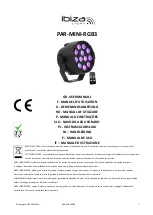
Teardrop Campers • nucamprv.com
25
Teardrop Campers • nucamprv.com
24
TONGUE WEIGHT (or Hitch Weight):
The amount of weight that presses
down on the hitch when your trailer is connected to a vehicle. On a tow
vehicle the tongue/hitch weight is considered cargo and must be less than
Payload Capacity of the tow vehicle so as not to cause steering safety
hazards of the tow vehicle.
CURB WEIGHT:
The actual weight of a trailer with standard equipment,
including the maximum capacity of LP gas and fluids, a battery(s) and the
factory mounted spare tire. This includes tongue weight on a trailer.
CCC (Cargo Carrying Capacity, also known as Payload Capacity):
The
maximum weight that persons plus cargo should never exceed. Payload is
derived by subtracting Curb Weight from GVWR.
• United States: CCC is equal to GVWR minus Curb Weight. Water is
considered cargo weight.
• Canada: CCC is equal to GVWR minus the Curb Weight and a full
tank of fresh (or potable) water.
LOAD DISTRIBUTION
The balance of a trailer is a key factor in how a trailer handles when it is
being towed. Cargo must be distributed evenly from side to side and
front to back. Generally, the way to determine this is to weigh your trailer
on a public scale. The weight bearing on either side should be equal or
within 200 lbs. difference. More importantly, load the trailer so the tongue
weight falls between 10-15% of your gross trailer weight. Instructions on
how to determine these weights can be found in STEPS TO DETERMINE
CORRECT LOADS on pages 26-27.
CARRYING CARGO
The load on your trailer must never exceed:
1. GVWR (Gross Vehicle/Trailer Weight Rating)
2. GAWR (Gross Axle Weight Rating)
3. Maximum Load Rating of tires.
4. Cargo Carrying Capacity
The GVWR and GAWR can be found on the VIN (Vehicle Identification
Number) label located on the front of your chassis near the tongue jack.
Example (not specific to your trailer):
The
TIRE AND LOADING INFORMATION LABEL
provides the customer with individual trailer cargo
weight limits, tire size and recommended pressure. The label is located on the exterior front passenger
side of the trailer body.
Example (not specific to your trailer):
The Cargo Carrying Capacity label provides cargo loading information and is located on the jamb of
the entry door.
Example:
When loading your trailer:
• Determine where gear should be placed to ensure a balanced trailer and document it for
future reference.
• Approximately 60% of total cargo weight should be forward of the axles.
• Heavy items should be kept near the floor over the axles to keep center of gravity down on
the trailer.
• Don’t place heavy items in the upper cabinets to avoid shifting and falling during travel.
• Secure all cargo to keep it from shifting during travel.
• Emergency items should be stored in a waterproof container. Place in an easily
accessible compartment.
An imbalanced trailer can cause excessive
sway or adverse tow vehicle handling.
This can result in loss of control, serious
injury or death.
WARNING
Do not exceed the GAWR (Gross Axle
Weight Rating) of your trailer. If you have
exceeded the GAWR you must remove or
rearrange cargo until you are within the
proper load.
DANGER
An overloaded trailer can result in serious
injury or death. Never exceed weight
ratings of a trailer by over-loading with
cargo. If you exceed load ratings, your
warranty will be voided, and you could
be liable for any accidents that may
happen due to negligence.
WARNING














































